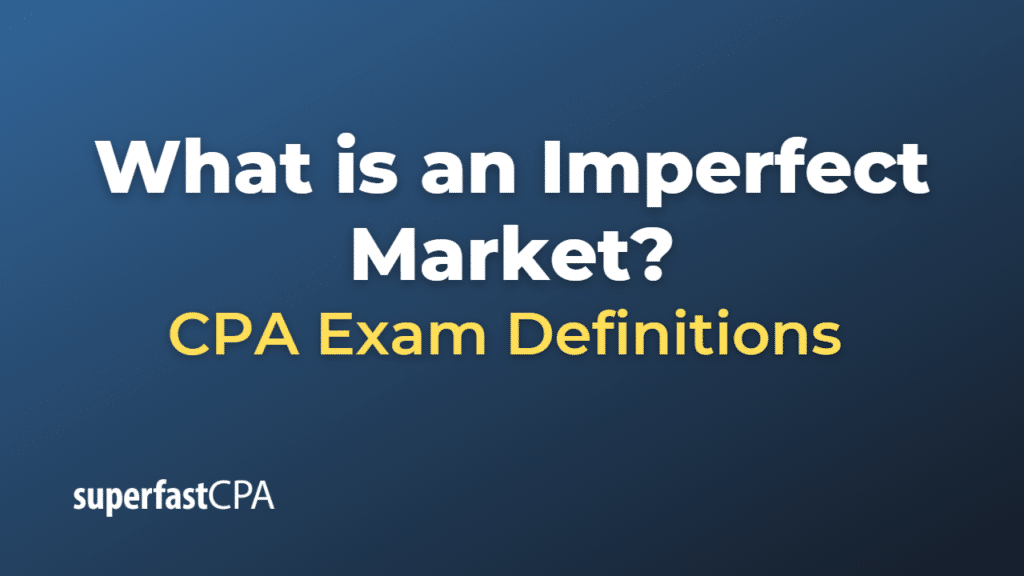Imperfect Market
An imperfect market, also known as a “non-competitive” or “distorted” market, refers to any economic market where the conditions necessary for perfect competition are not met. Perfect competition is a theoretical market structure that includes several criteria, such as:
- All firms sell an identical product (homogeneity).
- All firms are price takers, i.e., they cannot influence the market price (they must accept the market price).
- All firms have a relatively small market share.
- Buyers have complete information about the product being sold and the prices charged by each firm.
- The industry is characterized by freedom of entry and exit.
In an imperfect market, one or more of these conditions are not met. This could include markets with:
- Monopoly: A single company controls the entire market.
- Oligopoly: A few firms dominate the market.
- Monopolistic competition: Many firms sell differentiated products.
- Asymmetric information: Buyers and sellers have different amounts of information, one side has more information than the other.
- Entry and exit barriers: It’s difficult for new firms to enter the market or for existing firms to leave.
Most real-world markets are imperfect to some degree. For example, the market for smartphones is an oligopoly with a few large players like Apple, Samsung, and Huawei dominating the market. In this market, products are differentiated (an iPhone is different from a Samsung Galaxy), companies have significant market shares, and there are substantial barriers to entry (such as the high cost of developing new technology), which make this an imperfect market.
Example of an Imperfect Market
Let’s consider the market for commercial air travel as an example of an imperfect market.
This market shows several characteristics of an imperfect market:
- Oligopoly: Only a limited number of airlines dominate the market. These major airlines control a large percentage of market shares. Examples include American Airlines, Delta Air Lines, and United Airlines in the U.S., or British Airways, Lufthansa, and Air France in Europe.
- Differentiated Products: Even though all airlines provide air travel, the way they package their service can vary greatly. Differentiation can be seen in terms of routes, flight times, in-flight services, rewards programs, and more.
- Barriers to Entry: The airline industry has high barriers to entry. It requires substantial capital investment to purchase airplanes, hire and train staff, establish booking systems, and comply with regulatory requirements. This prevents new companies from easily entering the market and competing.
- Asymmetric Information: While not as pronounced, some level of information asymmetry does exist. The airlines have more information about their costs, their capacity, their pricing strategies, and other operational aspects than passengers.
As a result of these factors, airlines have a certain degree of market power. They can influence prices, especially in markets where they have a dominant position. This is very different from a perfectly competitive market where individual firms are price takers and cannot influence the market price.













